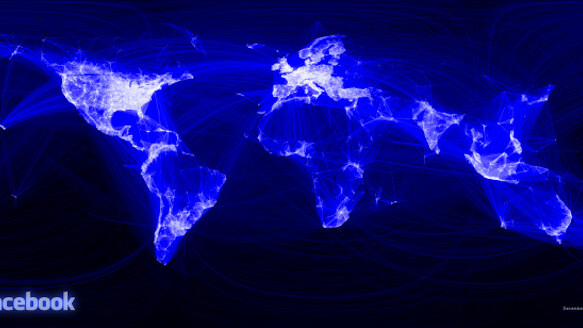
It wasn’t all that long ago, in the scope of actual years, that we were communicating via BBS. Some of you might remember those. You’d sign in, via your 14.4 modem (though truth be told, the BBS dates back to the days of the 600 baud modem), post your thoughts and see what others were saying. If we’re going to look at a history of social networks via computers, then the BBS has to be high on that list.
But my how times have changed. As technology evolves, we continually reach into new and different directions in order to find that next big thing. It’s with that in mind that the title of this piece comes into play. There is no such thing as “future-proof”, and that rings especially true when it comes to communication via social networks.
There’s been a lot of talk lately about Google+ (and rightly so) because it has done a lot of things right that Facebook has yet to fix. But I think that we have to reach further back, to more non-traditional definitions, to see where we’ve come from. In doing so, we should be able to see where we’re going and we’ll also see precisely what Google+ is already doing wrong.
From the early days of email and BBS, we didn’t get much of a change until the 1990s. ISPs such as AOL and Prodigy offered the ability to create profiles, chat with other users and send in-house mail. While these features are primarily how we define social networks today, the ISP-run networks were missing one gigantic factor – outside reach. Once easily-manufactured websites became standard, things started on the course where we find ourselves today.
Geocities
 It might have been filled with animated GIFs and bad MIDI files, but Geocities was, at its heart, a very early version of social networking. Often times people would build websites in the different “cities”, covering aspects and interests that fit inside of them. If you wanted to build a website to just talk about yourself (consider this early ego-blogging) then you would need to categorize yourself by your interests and then build inside of the city that fit the categorization.
It might have been filled with animated GIFs and bad MIDI files, but Geocities was, at its heart, a very early version of social networking. Often times people would build websites in the different “cities”, covering aspects and interests that fit inside of them. If you wanted to build a website to just talk about yourself (consider this early ego-blogging) then you would need to categorize yourself by your interests and then build inside of the city that fit the categorization.
Ultimately Geocities saw its demise not because of a lack of ability but because it simply didn’t keep up with what people were wanting. As ideas grew, the city walls could no longer hold them. More and better tools for building websites became readily available and Geocities’ users left it a ghost town.
The story of Tripod was much the same. It offered easy-to-build sites, had an arguably better domain structure and even offered the ability to direct your domain to the site for hosting. It was less of a network than Geocities, but it was instrumental in helping to form our next version of social networking.
Webrings
You remember these, right? Sometime during the boom of Geocities and Tripod (and to a lesser extent, Angelfire) groups of people with similar interests would join a “ring” of other sites, exchanging links with them. Often times, these rings would even have navigation bars that would allow you to push a button and be linked directly to the next site inside the ring.
It’s somewhat arguable that these webrings could be classified as early social networks, but I think that they hold a big part of what has formed the networks that we see today. These shared interests are incredibly important and help us to connect to people that we might not otherwise have known. If that fact isn’t innately social then my entire definition is skewed.
Through the better part of the 1990s, both ISP-run and self-made sites continued to contribute to early social networking. In fact, nothing much changed until we got into the new decade, specifically 2002.
Friendster, MySpace and Facebook
We were obviously looking for a change. While people weren’t then (and still aren’t) ready to give up their personal websites, they were looking for easier ways to connect. There were inherent difficulties with creating a network out of separately run and hosted sites and therein lies the imperfection that brought about Friendster.
 Often credited (inaccurately, if I might say so myself) as the first social network, Friendster grew massively and rapidly, to the point that 1 in about every 126 Internet users was on the site. It spawned in its wake a slew of other sites including MySpace, Tribe.net, Jaiku and LinkedIn, each trying to capitalize on points that Friendster didn’t originally.
Often credited (inaccurately, if I might say so myself) as the first social network, Friendster grew massively and rapidly, to the point that 1 in about every 126 Internet users was on the site. It spawned in its wake a slew of other sites including MySpace, Tribe.net, Jaiku and LinkedIn, each trying to capitalize on points that Friendster didn’t originally.
In fact, even today’s behemoth Facebook was a specialized clone of MySpace that was directed initially at college students. But Facebook has done what networks before it failed to do in trying to encompass more of the Internet within its walls. In doing so, it has often been compared to the second coming of AOL.
With the launch of Google+, it’s easy to argue that it is inherently similar to Facebook. The main differences lie in a lack of (often-times annoyingly invasive) social games and the thought that sharing in groups should be easier than Facebook’s version of the same function. While the fanboys of each service will surely flame me for this statement, Google+ thus far is still copying the Friendster methodology of things.
Many are touting the explosive growth of Google+ (20 million users in 3 weeks is nothing short of stunning) as testament to the company’s ability to do social “right”. However, I’ll argue that and say that the growth is simple to explain — When Friendster launched, and even Facebook 2 years later, people weren’t sold on the idea of a social network by that definition. Now, 9 years later, we are. Google+ has done well in capitalizing on its dominance of the Internet and it should be applauded. However, it hasn’t done anything that is inherently different from those sites that we were using in 2002.
This goes back to my earlier statement where I said that we would see precisely what Google is doing wrong with the service. By subscribing to (essentially) the same view of social networking as we have for the previous 9 years, there’s not yet an obvious drive to move us forward. The Internet as a whole is inherently social already, so even Google’s self-serving +1 ranking system and its hope of creating the social graph for the entire Internet has already been done.
Interestingly, what we’ve actually seen out of social networks is a lot of failed experiments and an eventual return to what we were doing 20 years ago. With the days of BBS, chances are that you had a lot in common with the people to whom you were sharing your thoughts. We tried to move away from that, thinking that our location or a wider reach could ultimately be the solution, but then we’ve found (with Google+) that what we really want is what we already had — The easy way to gather and share information and conversation with like-minded people.
Google+ isn’t perfect. Far from it, in fact. But by that realization, we also have to understand that we don’t yet have a true definition of what “perfect” would be. In fact, I’d venture to say that we never will. Due simply to the fact that we as people are ever-changing, so too are our expectations. We’ve found things to scratch our itches (Twitter, Foursquare and other, more niche-oriented ideas do this) as they happen but we can never really tell when that next itch will come along.
The perfect social network will never exist because we as humans won’t let that happen. We refuse to be happy with “good enough” and that’s a very good thing. Because of this fact, we will always want more and better services, even if they’re only helping us to accomplish what we’ve already been doing for years. The companies that win in this endless race will be those that can spot the itches as they happen, then be ready to scratch them until the next one comes along.
Get the TNW newsletter
Get the most important tech news in your inbox each week.





